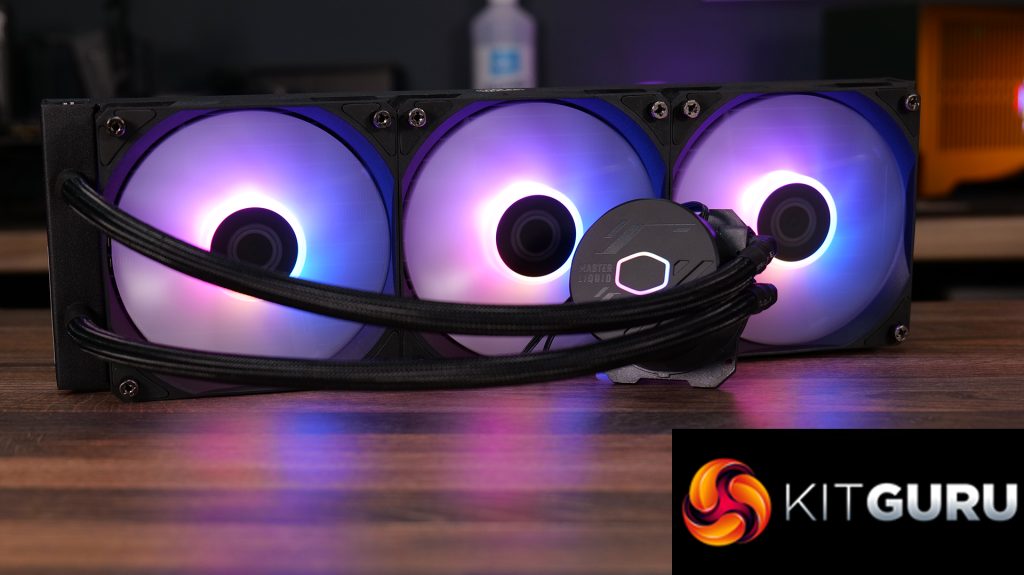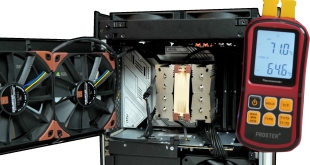Cooler Master Lite coolers have always targeted the budget corner of the CPU cooling market and this latest iteration of the L series is no different. Whether it is at its MSRP price of around £105 or on offer at places like Amazon as we recently saw, it offers value for money to price-conscious PC builders. However, that’s only good if the performance is competing with similar-priced alternatives from rival CPU cooler vendors.
This time around Cooler Master seems to have lost focus on price vs performance as there are several competing coolers in the same budget range as the MasterLiquid Core 360L ARGB which perform significantly better, which is a shame as there are some really good things about the 360L Core that I would like to see in other coolers, such as the RGB connector clips and the double-threaded screws that assist with front chassis radiator mounting.
The performance of the 360L Core on our new Ryzen 9 7950X test system was way off what we would expect from a quality 360mm AIO, in fact it was even beaten by other older and smaller coolers. You could say that’s down to the price, but when you look at other coolers in this price range with similar specs such as the DeepCool LT720, Endorfy Navis F360 and the Arctic Liquid Freezer II 360 you realise that shouldn’t be the case, performance should not be compromised.
Thermal Performance aside, the MasterLiquid 360L Core is decent in terms of how it looks, the radiator has an attractive textured coating and the RGB effects are perfectly fine for a budget cooler. The installation process is easy and all cables have standard motherboard header connections so there are no additional RGB/fan hubs to install which reduces cable clutter or additional software required to run the cooler and RGB lighting which is a big plus point.

Being available in 240mm and 360mm sizes and white or black colour schemes means that there's an option for any type of system. Cooler Master bundles all white cables and silver screws with the white cooler and black cables with black chrome screws/brackets with the black coolers so the little details have not been missed. Also included is a generous tube of thermal compound so if you need to re-mount or reinstall the cooler later down the line you will have some spare TIM for that purpose.
So really it's just the thermal performance that lets this cooler down, which is a pretty big problem if you intend on using it with a high-power CPU such as the Ryzen 9 7950X or Intel Core i9. Maybe it wouldn’t be wise to use a cheap cooler like this with those high-power processors but saying that, you can use the similarly priced alternatives on those platforms without the worry about your CPU overheating so keep that in mind. However, on a lower-powered CPU, the 360L core ARGB will probably be ok.
It is difficult to recommend a cooler that performs as poorly as the MasterLiquid 360L Core ARGB does, but at its current offer price of under £90 on Amazon it might be worth taking a punt on. But only if you are running a lower-powered CPU and you simply cannot afford to spend a little more on something with more cooling oomph.

The Cooler Master MasterLiquid 360L Core ARGB is available to purchase from Overclockers UK priced at £109.99 HERE. It is also currently on offer at Amazon priced at £88.99 HERE.
Pros:
- Very affordable.
- ARGB fans and pump cover logo.
- Easy installation.
- No need for an RGB/Fan controller or software.
Cons:
- Disappointing thermal performance.
- High noise output with fans at max RPM.
KitGuru says: Cooler Master has added another cheap AIO to the market with a choice of colour schemes and dual-zone ARGB lighting, which might sound tempting for users building budget systems. But before you go out and spend your cash on this, check out what else is available first as you might be surprised by the performance of some alternatives.
 KitGuru KitGuru.net – Tech News | Hardware News | Hardware Reviews | IOS | Mobile | Gaming | Graphics Cards
KitGuru KitGuru.net – Tech News | Hardware News | Hardware Reviews | IOS | Mobile | Gaming | Graphics Cards



